Women Entrepreneurs from Indigenous Peoples and Local Communities
Meet the participants of the global and regional editions of the WIPO Training, Mentoring and Matchmaking Program on Intellectual Property for Women Entrepreneurs from Indigenous Peoples and Local Communities.
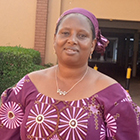
IMAGE: Abdul hafis
Aii Shatu Ali
Mbororo | Mbororo Social, Cultural and Development Association (MBOSCUDA), Cameroon
Aii Shatu is a Mbororo Indigenous pastoralist from Cameroon. She is a veterinarian by profession, an agro-pastoral adviser and a master’s student in rural development and administration. Among other commitments, she works with the Mbororo Social, Cultural and Development Association (MBOSCUDA) in Cameroon as the Gender and Women Coordinator.
Mbororo Indigenous women have a longstanding tradition of producing and designing handicrafts with natural local materials, such as calabashes, covers and carriers that are used for household purposes and for home decoration. The community also holds a rich tradition in music and unique hair plaiting techniques.
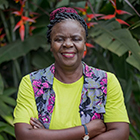
IMAGE: Kibazzi
Judith Bakirya
Jinja Women Agribusiness Cooperative (JiWAE-C), Uganda
Judith comes from the Busoga region of Eastern Uganda. As a child, she started learning about agriculture and farming from her family. Her grandmother also passed on her knowledge and skills in herbal medicine, which Judith is now committed to transmitting to the younger generations within her community.
Judith participates in the Jinja Women Agribusiness Cooperative (JiWAE-C), a local community of women who work together to share learnings, knowledge, market access, and preserve their Indigenous foods and herbal plants. The Cooperative implements different projects, including on artisanal processing of herbal well-being products, preservation of Indigenous herbs through herbal gardens, and production of medicinal remedies made of fruit seeds flour and herbs.
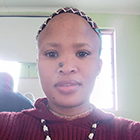
IMAGE: Appolia Dabe
Appolia Dabe
Sano, Naro | Tèèmààseé San Youth Development, Namibia
Appolia is a leader in the San community of the Naro clan in the Eastern part of Namibia. She is involved in, and has served her community from an early age.
Faced with progressive loss of ancestral lands, traditional knowledge, and traditional cultural expressions, Appolia co-founded Tèèmààseé San Youth Development, which strives to foster intergenerational exchange of traditional knowledge. Currently, the initiative includes the creation of beadwork by older and younger community members, which are subsequently sold locally.

IMAGE: Marc Prince Gomis
Satitia Gomis
Manjack, Senegal
Satitia is a member of the Manjack community. Early on, she became involved in the promotion of one of her community’s precious cultural products, the Manjack woven loincloth, a handwoven traditional textile from West Africa, renowned for its quality and beauty.
Under the program, Satitia will organize weavers of traditional Manjack woven loincloth in her region and intends also to develop a local company incorporating both dress and shoe makers that will use the traditional woven loincloth in new creations. Furthermore, to ensure preservation and valorization of the traditional designs and weaving technic, she will apply for a collective trademarks that may with time evolve into a geographical indication.
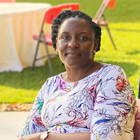
IMAGE: Estella Kyokusiima
Charlotte Kazoora
Bamukisa women development, Uganda
Charlotte is the founder of Tourism inclusion for all limited (TIFA). Her goal is to empower the youth and women in her community and reduce gender-based violence by providing them with a sustainable income. In order to do so, Charlotte provides training opportunities with skilled artisans to teach them how to produce quality handicrafts. Charlotte also provides market access for the goods, locally and abroad.
Charlotte plans to register a trademark to protect and promote the handicrafts that will be marketed under the SCECK CRAFTS project.
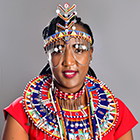
IMAGE: Olosinyati photographs
Eunice Nabebek Koin
Loita Maasai community | Entito Creations, Kenya
Eunice is from the Loita Maasai community of Narok, a predominantly pastoralist community closely connected to its cultural heritage with distinctive clothing, jewelry, and traditional way of life.
A marketer by profession, and a fashion design enthusiast, Eunice founded Entito Creations Ltd, to incorporate traditional Maasai patterns and beaded products with modern fashion designs.
Eunice works with a group of women in her village, and together they undertake beadwork, as a source of livelihood for the group’s families. They support and teach beadwork to preserve their culture and empower the community, enabling girls to enroll in school.
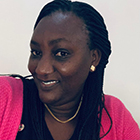
IMAGE: Lemboko Naftal
Diana Lemboko
Maasai | Maasai Women Development Organization (MWEDO), Tanzania
Diana is part of the Indigenous Maasai community of Tanzania. Since 2005, she has been working with the Maasai Women Development Organization (MWEDO) on social and economic development projects. MWEDO was founded by women themselves to counter the injustices women and girls face and strive for gender equality through economic empowerment, access to education, and community healthcare.
One of MWEDO’s flagship projects is the creation of the Fair Trade Centre, which aims at building the capacity of Maasai women in the handicraft sector and providing market access. Through the project, women are able to develop competitive and marketable bead products, earn income and reduce poverty in their households.

IMAGE: Chiyedza Machingauta
Tsitsi Machingauta
Domboshava | Women’s Farming Syndicate Trust, Zimbabwe
Tsitsi founded the Women's Farming Syndicate Trust, an organization that focuses on empowering women in the rural community of Domboshava. She is actively involved in using traditional knowledge systems to create viable products from the forests, promoting environmental sustainability, and engaging in reforestation efforts.
Recognizing the immense potential of the community women, Tsitsi strives to empower them economically through sustainable practices. By utilizing traditional knowledge systems, she helps them develop viable products like teas, herbs, and baskets, thereby creating economic opportunities for themselves and their community.
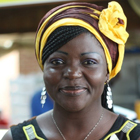
IMAGE: Mahouli Giandang
Celestine Habiba Magouo Epse Djallo
Mundang, Cameroon
Celestine is the founder and manager of HABIBA NATURAL CARE, a company that produces natural cosmetic products from leaves, barks and vegetable oils based on the traditional knowledge of the Mundang people.
Celestine’s business supports women from her community by creating employment opportunities and purchasing local raw materials such as shea butter and sesame oil. During her time in the program, Celestine has focused her IP strategy on the protection of her products’ recipes and distinguishing her products in the marketplace.
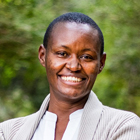
IMAGE: Musyoki Musyoka
Elizabeth Mbau
Kikuyu, Kenya
Elizabeth is developing a brand of herbal tea made from indigenous plants. In doing so, she is working with local farmers in the Aberdare-Mount region of Kenya. She hopes that her project and business to come will help promote the cultivation and preservation of the indigenous plants and provide income for the local communities that cultivate them.
During her time under the program, Elizabeth will focus on product development, market research and the development and registration of a trademark for her business.
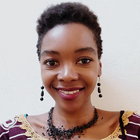
IMAGE: Nyasha Clesby Nhutsve
Nyasha Clesby Nhutsve
Shona / Karang, Zimbabwe
Nyasha is a designer and craft maker who works with talented but disadvantaged women in the rural Victoria Falls region of Zimbabwe to produce cultural artifacts for the tourist market. She has a registered business that operates according to fair trade standards. She plans to open a shop in Victoria Falls that will provide creative women access to market and a fair price for their products.
Nyasha wants to learn how intellectual property can be used to protect designs and products. She also plans to register a collective or certification mark for the products marketed in the shop as well as a regular trademark for her own products.
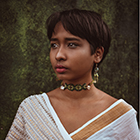
IMAGE: Shivani Ragavoodoo Canee
Shivani Ragavoodoo Canee
Cahaya, Mauritius
Shivani is a designer and founder of Cahaya, a brand focused on valorizing local craftsmanship and the use of locally sourced materials, while striving for continuous innovation. Operating mainly via e-commerce and seasonal markets, Cahaya also provides services like creative workshops to locals, schools, corporates, and tourists.
In 2023, Cahaya launched its first training program entitled Weave, Wove, Woven, upskilling a group of women beneficiaries on how to weave the pandanus leaves. The products created during the training have been exhibited locally and internationally.

IMAGE: Laima Abeid Sinare
Laima Abeid Sinare
Chagga, United Republic of Tanzania
Laima is the owner of AYMA, a registered trademark specialized in the design and creation of beaded women’s accessories. The accessories are based on Tanzania’s culture and traditions, including her own Chagga people. Working with other indigenous women, it is Laima’s goal to maintain, protect and promote her cultural heritage.
During her time in the program, Laima has grown her business and learned how to benefit from, and manage, her trademark.
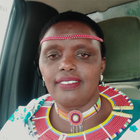
IMAGE: Cynthia Suyianka
Cynthia Suyianka
Maasai, Kenya
Cynthia’s project is to establish the Kajido Indigenous Women Enterprise to produce and market honey and related products, based on Maasai traditional knowledge in bee keeping and farming.
Under the program, Cynthia will seek support from the Ministry of Agriculture, Livestock, Fisheries and Co-operatives of Kenya to provide women from the community further training on bee keeping practices. Pilot groups will be established in the Isinya, Kilonito and Mile Tisa areas and will each be afforded 50 beehives. Cynthia plans to register a collective mark to protect and promote the honey-based products.
In parallel, Cynthia also plans to launch the Maasai Language Project aimed at preserving the Maasai language and culture.
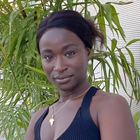
IMAGE: Cherina Zerbo
Cherina Zerbo
Samo and Mossi Tribes, Burkina Faso
DON TALATO is a luxury African clothing company founded by Cherina, who hails from the Samo and Mossi Tribes of Burkina Faso. Cherina established the company with the goal of redefining luxury à l’africaine and providing a platform for artisans and seamstresses to showcase their designs.
Cherina, who joined the program in 2021, aims to register her trademark in key markets to distinguish and promote her goods.
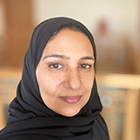
IMAGE: Naeema Al Maimani
Naeema Al Maimani
Muscat, Oman
Naeema is the owner and manager of the Bait Muttrah Gallery for Heritage and Arts, founded in 1996 and based in Muscat, Oman. When Naeema noticed that Omani traditional silver ornaments weren’t suitable for daily use in terms of weight and shape but rather only suitable for traditional events or as framed decoration, she had the idea to design and produce traditional ornaments in a simplified and modernized way. Making them easy to wear, while at the same time preserving the spirit and authenticity of traditional Omani silver ornaments allowed her to contribute to the dissemination of traditional Omani culture.
As a result of the program, Naeema has registered a trademark that protects and promotes her products.
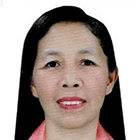
IMAGE: Tronix imaging center, Puerto Princesa City, Palawan, Philippines
Loreta Alsa
Tagbanua, Philippines (the)
Loreta is a member of the Tagbanua People of Plawan, in the Philippines. She has a background as a forest ranger and is working with the Philippines Non-Timber Forest Product Exchange Program. The mission of the program is to catalyze the empowerment of forest dependent communities in Asia towards sustainable management of forested landscapes.
As a participant of the program, Loreta is working on the creation of a brand for the commercialization of honey harvested through numerous indigenous harvesting practices. The honey will be labelled based on the type of honeybee it is collected from. Her project also aims to protect the knowledge, skills and practices of the Tagbanua People on traditional honey harvesting from exploitation.
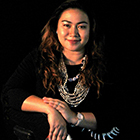
IMAGE: Ika Norafiza Mazlan
Lucille Anak Awen Jon
Bidayuh, Malaysia
Hailing from Kampung Sibuluh Bau Kuching, Sarawak, Lucille is the founder of a brand known as PUNGU BORNEO. The brand identifies a series of traditional Bidayuh products and seeks to provide a sustainable income for the indigenous women who produce them, particularly housewives and single mothers.
Following her participation in the program, Lucille has applied for a trademark for her brand. She has also developed her marketing strategy and her online presence through both Instagram and Facebook.
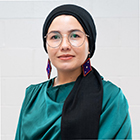
IMAGE: Kalila Snow Jan
Sana Askari
Hazara | Esheel Stitching Circle, Afghanistan
Sana was born in Afghanistan and raised in Pakistan as part of the Hazara community. She founded the community-led project Esheel Stitching Circle (ESC) to educate and empower the community about its culture and provide employment opportunities for women and girls, enabling them to work from home.
ESC works with and for women with cultural embroidery skills, by providing training opportunities as well as resources to create their products to be sold through ESC and fund their education. The project fosters the preservation and dissemination of the community's cultural knowledge through the production of cultural Hazaragi pieces.
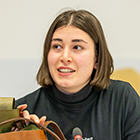
IMAGE: BERROD/WIPO
Elene Bulashvili
PESVEBI, Dedoplistskaro, Kakheti Region, Georgia
Elene is a weaver representing studio PESVEBI, which makes Kizikian rugs using natural dyes. PESVEBI employs ten local women using local wool that can no longer be processed and is often thrown in nature.
PESVEBI products stand out because of the density of the weaving, color, and artistic level of ornament composition. Rug makers draw inspiration from the local landscape for the weaving themes represented in their work. The studio has received a certificate of excellence for its handicraft products in Transcaucasia and participated in many national and international exhibitions.
Elene is interested in developing the PESVEBI’s intellectual property rights portfolio and explore potential regional and global partnerships.
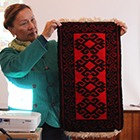
IMAGE: Sagynbek kyzy Symbat
Gulnara Derbisheva
Leilek district, Kyrgyzstan
Gulnara is from the Leilek district of the Batken Province in Krygyzstan. To overcome poverty and economic hardship, Gulnara and a group of women from the border communities of the Province developed self-help groups and began producing handmade carpets and souvenirs.
Gulnara’s project is to create a brand and register a collective or certification mark under the name LEILEK KILIM CARPETS to identify high quality carpets and souvenirs made by the self-help groups, thereby allowing the women of her community to make a greater profit. In parallel, Gulnara is also training the women on marketing, management and pricing strategies.
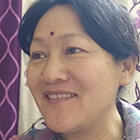
IMAGE: Laxmi Gurung
Laxmi Gurung
Gurung | Indigenous Women League Nepal, Nepal
Laxmi belongs to the Gurung Indigenous community of Nepal for whom pastoral activities are part of the traditional way of life.
She is the president of the Indigenous Women League Nepal. She works for the benefit of the community women by supporting them to protect and promote their traditional knowledge related to agriculture, as well as their skills and traditions through activities aimed to further their economic empowerment.
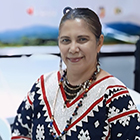
IMAGE: Nykee Kyla G. Kinan
Nenita Kinan
T’boli | Cooperative of Women in Health and Development (COWHED), the Philippines
Nenita belongs to the T’boli and works as the Local Culture and Arts Coordinator of the Municipality of Lake Sebu, South Cotabato, in the Philippines. She is engaged with fellow members of her community in the promotion, protection, preservation, and conservation of the T’boli Culture.
In her capacity as a Civil Society Organization Desk Officer, Nenita empowers some 80 civil society organizations and NGOs in the locality to actively participate in the local governance.
Additionally, Nenita is currently the chairperson of the Cooperative of Women in Health and Development (COWHED) aiming to empower the T’boli women to become entrepreneurs and promote cultural tourism.
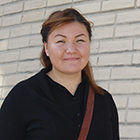
IMAGE: Nasima Kultaeva
Symbat Sagynbek Kyzy
Youth Fund Stimul, Kyrgyzstan
Symbat lives in the Batken Region in Kyrgyzstan. For the past five years, she has been working as a coordinator of social projects at the Youth Fund Stimul (incentive). The organization implements socio-economic projects aimed at empowering vulnerable women from the community, including women with disabilities and living in rural areas.
The Stimul team wishes to open a sewing workshop to craft the women's national headdress Kep-takiya. They plan to employ women with disabilities from the community and create income generating opportunities for them while reviving and popularizing the traditional attire with the younger generation.
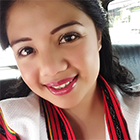
IMAGE: Elamae Membrere
Elamae Membrere
Applai-Kankanaey, Philippines (the)
Leader of the Poblacion Tadian Young Women’s Organization, Elamae is a member of the Applai-Kankanaey Indigenous Cultural Communities. She wants to ensure that her indigenous community can revitalize traditional knowledge that underpins their cultural identity, which is at risk of being lost. Specifically, her project aims to ensure continuity of cultural knowledge about weaving skills, traditional patterns and cultural practices around clothing use in her indigenous community, and to create employment opportunities for women.
In July 2021, her organization received a Government grant, which was a set of looms for weaving and some speed sewing machines. She is planning a training program for young women to learn the arts of traditional backstrap weaving and loom weaving under a weaving master. Elamae will use intellectual property rights to protect and promote the products produced by the women she works with, including, but not limited to, a trademark.

IMAGE: Nguyen Phuong
Ly Mai Niekdam
Ede | Adventure & Eco Tour Agency, Viet Nam
Ly Mai is a member of the Ede ethnic group based in the central highlands of Viet Nam. Her community-based business centers around sustainable community tourism and the revival of traditional Indigenous weaving techniques.
Having founded the Adventure & Eco Tour Agency in 2017, Ly Mai advocates for the Community-Based Tourism model, which emphasizes local ownership, profit sharing, and environmental conservation, while preserving the community’s rich cultural heritage.
With a deep commitment to fostering positive change, Ly Mai strives to preserve communities’ unique cultural heritage and promote responsible tourism practices, including through supporting traditional folk musical children's groups.
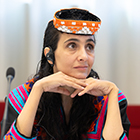
IMAGE: Naveed Yousafzai
Mansura Shams
Kho & Kalashi, Chitral, Pakistan
Mansura is a social entrepreneur and the director of the not-for-profit enterprise Kho & Kalashi.
For the past eight years, she has been working for the benefit of vulnerable local communities in the district of Chitral, Khyber Pakhtunkhwa, with the objective to empower local community women by providing them with a safe space to pursue entrepreneurship in the creative arts.
Her organization works with 500 artisans from all over Chitral and counts 40 women-led businesses as registered members. Her enterprise is a community hub with a significant social impact in the area in which it operates. Mansura aims to expand it and create more opportunities for the local communities.

IMAGE: Lasha Adamashvili
Ana Shanshiashvili
Georgian Heritage Crafts Association, Georgia
Ana is the Executive Director of the Georgian Heritage Crafts Association (GHCA), which unites more than 300 member artisans, 70% of whom are women. GHCA connects master craftspeople with young practitioners and with contemporary designers. It aims to support the effective marketing of Georgian craft products locally and internationally, and thereby also to economically empower women handicraft practitioners in Georgia.
Ana’s project will enhance the branding of the GHCA shop by registering Ethnodesign as a trademark. She intends to support quality and design standards handicraft products sold through the GHCA by registering a collective mark. Lastly, Ana’s project will explore stronger branding of wool products from the Tusheti/Akhmeta region through the registration of a Geographical Indication for Tushetian Wool products.
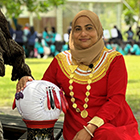
IMAGE: Giyas
Aishath (Shiru) Shirhan
Haajara Feminine Designs, Maldives
Shiru is the founder of Haajara Feminine Designs, a tradition-based enterprise that has been running for more than three decades and operating online since 2017. Together with other local women artisans, she wishes to revive and popularize the traditional Maldivian attires such as the Libaas and Rumaafalhi as well as Kinaari jewelry. She also raises awareness and teaches school children how to weave Kasabu.
Shiru markets her jewelry and souvenirs at resorts as well as through a government initiative called Authentic Maldives, that aims to promote and sell products by local artists in Malé and at the airport.
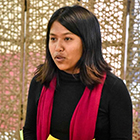
IMAGE: Bishal Rajbhandari
Rajita Shrestha
Newa, Nepal
Rajita is a member of the Newa community, known for its rich culture and traditions. Amongst these traditions is the production of handmade rope incense, a practice that used to be taught to girls within the community as rope incense is needed to conduct nitya puja (daily worship). In the past decade, incense-making skills are getting lost as the market is filled with industrial and imported stick incense.
Rajita’s business project is to produce organic handmade rope incense using ancient methods based on her community’s traditional knowledge. The project will result in the employment of more than 20 indigenous women and finance the producers of the organic raw material used to make the incense. Rajita plans to register a trademark to protect and promote her products.
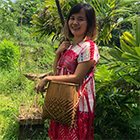
IMAGE: Saw Moo Shee
Naw Su Wah
Karen, Myanmar
Naw Su is a Program Assistant at the Karen Environmental and Social Action Network (KESAN). She works with Karen communities to strengthen their traditional practices towards developing food sovereignty and preserving indigenous knowledge relating to food and nature.
As a part of the program, Naw Su will support Karen women with the cultivation and production of dried and preserved mustard leaves, a product unique to Mutraw Karen communities and traditionally used in soups, rice, and salads. Naw Su plans to register a trademark to protect and promote the mustard leaves and will target local markets as well as diaspora communities.
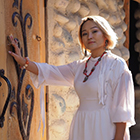
IMAGE: Ivan Bulagin
Nurzat Zheenbek Kyzy
Art Group Zharashat, Kyrgyzstan
Nurzat is the director of the Art Group Zharashat, which unites artisans of applied arts, artists, architects, designers, sculptors, ethnographers and historians. Nurzat and her team aim to create an Electronic Book of Ornaments and Patterns, which will provide comprehensive information on traditional Kyrgyz ornaments and patterns, including, for example, their origin, name, meaning, history and rules of use.
As part of the program, Nurzat will work on guidelines for the appropriate use of traditional designs.
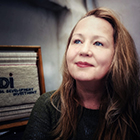
IMAGE: Armida Alikaj
Armida Alikaj
Social Development Investment (SDI), Albania
Armida co-founded the non-governmental organization "Social Development Investment" (SDI) in 2017. SDI carries out research and market analysis towards building sustainable small enterprises that support women's social and economic empowerment.
SDI's work is currently focused in the North and Northeast regions of Albania, in which wool textiles represent a primary source of income for generations of many communities. SDI aims to improve artisans' wool skills by developing wool-based, simple-to-manufacture, and environmentally friendly products that generate income for the artisans and their families. By participating in the Program, Armida wishes to learn more about how intellectual property can protect and promote these regional wool products.

IMAGE: Mari Gubacheva
Anastasiia Arhunova
Gnizdo, Lviv, Ukraine
Anastasiia has had a deep interest in the culture and traditions of her country since she was a teenager. Early on, she began exploring her country and studying the cultural aspects of each region that intrigued and inspired her.
She founded the linen home textile brand Gnizdo that has collaborated with many dressmakers, local hotels, artists, designers, and bloggers, participating in multiple exhibitions and projects nationally and regionally.
She would like to learn how to protect intellectual property assets of traditional craftswomen, help community craftswomen get orders and benefit commercially from their craft, and preserve, modernize, and popularize the cultural heritage of the different regions of Ukraine.

IMAGE: BERROD/WIPO
Fruzsina Arkhely
Directorate of Intangible Cultural Heritage, Hungary
Fruzsina has been working at the Hungarian Open Air Museum’s Directorate of Intangible Cultural Heritage since 2018. She is responsible for coordinating the implementation of the 2003 UNESCO Convention for the Safeguarding of the Intangible Cultural Heritage. As part of her job, she provides advice to, and communicates with, local communities on intangible cultural heritage issues.
Her PhD topic is related to small communities’ coping mechanisms regarding the growing influence of globalization and adaptation to modernization by transforming their traditional practices.
By participating in the Program, she hopes to be able to assist local communities with distinguishing and commercializing their products.
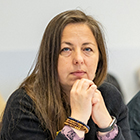
IMAGE: BERROD/WIPO
Radoslava Balabanova
Creative Center of Kalofer Bobbin Lace, Bulgaria
Radoslava is a lace maker representing the Creative Center of Kalofer Bobbin Lace. Its main purpose is to promote the Bulgarian national style and technique of bobbin lace making. The Center combines archival, organizational, commercial and educational activities. The two biggest challenges identified by the Center's team relate to financing and human resources, both of which are intertwined. By struggling to secure stable streams of funding, it becomes difficult to hire people with the necessary skills and competencies to further the work of the Center.
By participating in the Program, Radoslava would like to focus on protecting and growing the Kalofer bobbin lace brand.
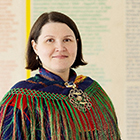
IMAGE: Marie Louise Somby, Árvu
Solveig Ballo
Sami, Norway
Solveig is a Sámi from Norway. She is an economist and the CEO of a small innovation company known as “Sámi business garden”. The company supports Sámi entrepreneurs operating in the creative industries that make and sell Sámi handicrafts.
As a participant in the program, Solveig has planned and organized a training program on intellectual property for Sámi entrepreneurs. The goal of the program was to address the development, protection and promotion of designs and traditional handicraft. Since then Solveig has continued to support Sámi entrepreneurs on intellectual property issues and is planning further training and awareness-raising activities.
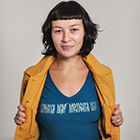
IMAGE: Malyutin Maksim
Tatyana Batova
Nenets, Russian Federation
Tatyana is a designer by profession. She strives to promote the significance of the cultural heritage of the Nenets people and preserve the Nenets language. Tatyana’s project aims to establish an educational platform to collect best practices and tools for indigenous peoples to preserve and promote their cultural heritage through design and fashion.
Tatyana hopes that her participation in the program will help her better understand the copyright and design systems and find solutions for more efficient protection of traditional culture-based designs.
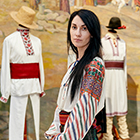
IMAGE: Aida Bondari
Cristina Dan
Șezătoarea Basarabiei, Chișinău, Republic of Moldova
Cristina is an embroiderer and administrator of a community of women who embroider traditional shirts with altiță (embroidery on the shoulder). Her community is called Șezătoarea Basarabiei and has around 20 active members in Chișinău, and around 200 throughout the country. One of the community’s objectives is to preserve their knowledge and pass it on to the next generations, but also to promote the traditional dress and especially the traditional altiță shirts.
Through participating in the Program, Cristina wishes to learn more about how to protect and commercialize products created by the community.
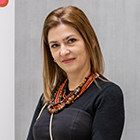
IMAGE: BERROD/WIPO
Liubov Drohomyretska
Art House Tobivka, Ivano-Frankivsk, Precarpathia, Ukraine
Liubov is an embroiderer and member of the Community of Precarpathian Craftsmen. She represents the Art House Tobivka, which incorporates a museum of authentic traditional clothing, an art space for people who want to learn traditional Ukrainian techniques of embroidery, a workshop of traditional Ukrainian handmade and machine embroidery, and a retail store of materials and fabrics for embroidery and other crafts. An important goal of the Art House is the promotion, reproduction and teaching of embroidery techniques, colors, and ornamental features as well as the manufacture of folk costumes.
Liubov wishes to learn more about how to protect and promote the different intellectual property assets of Tobivka.
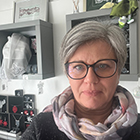
IMAGE: Metka Fortuna
Metka Fortuna
Idrija Lace Makers Association, Slovenia
Metka is a teacher at the Idrija Lace School and coordinator of activities of the Idrija Municipality, the Idrija Lace Makers Association, and the Faculty of Natural Sciences and Engineering that relate to Idrija lace.
Metka is the Chair of the committee for the geographical indication "Idrijska cipka" with permission to use the geographical indication for her lace products.
By participating in Program, Metka wishes to learn more about how to increase the value of lace for the benefit of the 100+ local community lacemakers, as well as explore hot to best attract younger generations to continue the traditional craft.
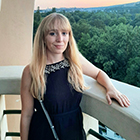
IMAGE: Enikő Gerencsér
Enikő Gerencsér
Győr, Hungary
Enikő is a fifth-generation blueprinter working in the family workshop in Győr.
Enikő is also a member of the Kisalföld Folk Artists’ Association cultivating and promoting folk art traditions and representing the artisans’ interests. The association organizes events, workshops, training courses, and exhibitions.
Some of the challenges for the traditional textile industry include difficulties in procuring raw materials such as cotton and dyes, and the rise of energy prices. She hopes to learn how intellectual property tools can help her community protect and promote blueprinting products and distinguish them from non-authentic goods.
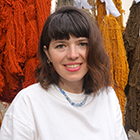
Image: NALBA
Lavinia Ghimbășan
NALBA, Transylvania, Romania
Lavinia began working with traditional textiles as the co-founder and co-designer of NALBA, a textile innovation project that addresses sustainability and the return to roots and traditional craft. She collects and revives natural dyes with the NALBA group.
A key value of the group is its community-based approach. The group’s research process included ethnographic research, visits, interviews, and workshops. They also gather visual inspiration and storytelling lines from within their community.
Lavinia intends to register NALBA as a trademark, as well as learn more on how to keep the dying techniques as trade secrets.
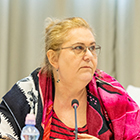
IMAGE: BERROD/WIPO
Anna Halíková
Česká Palička, Prague, Czech Republic
Anna is a self-taught and experienced lace maker representing the organisation Česká Palička. Her interest in bobbin lacemaking began when she was a child. In addition to bobbin lace, she is interested in all types of handmade textiles, including antique lace.
Anna co-founded the "Krajka" (Lace) Association, which became part of Česká Palička. In addition to publishing the magazine "Krajka," Česká Palička also offers lace courses, educational books, calendars and collections of lace patterns.
As part of her involvement in the Program, Anna wishes to register her logo and transmit tips on intellectual property to other lace makers in her magazine.
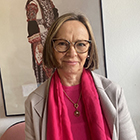
IMAGE: Slavica Hristova
Slavica Hristova
Skopje, North Macedonia
Slavica is an ethnologist and curator at the Museum of the City of Skopje.
She is also an entrepreneur and owns a fashion studio called "My Story" in which she produces clothing with ethnic elements. In her studio, she often welcomes women from different communities and backgrounds, and they work together to make unique clothing items with natural materials and folk inspiration.
By participating in the Program, Slavica plans to organize, through her position at the museum, workshops and information sessions for local community women entrepreneurs to improve their knowledge and skills to protect and promote their traditional creations.
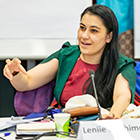
IMAGE: BERROD/WIPO
Leniie Ibrahimova
LeniE'/Busurmanka, Crimea, Ukraine
Leniie is a professional fashion designer who graduated from the Kharkiv State Academy of Design and Arts. Through her work and collaborations with community members, she is promoting and popularizing the traditional Crimean Tatar heritage. She participated in many international exhibitions, competitions, and fashion shows in Europe and beyond.
In 2015, she founded LeniE' LLC, specializing in fashion, film, and entertainment design, and registered the brands busurmanka LeniE'® and busurmanka® on the national level.
Leniie would like to explore opportunities for international trademark registration, design protection as well as geographical indication for certain creations.
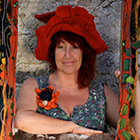
IMAGE: Nenad Martić
Vesna Jakić
Ruta, Cres, Croatia
Vesna is a designer and the head of the Ruta Association based on the island of Cres. For over two decades, Vesna has led projects and creative workshops for children and young adults to teach them about the traditions and usage of wool. Vesna aims to educate the community about the diverse ways in which wool can be used, such as by processing it via the felting technique and recycling it.
Vesna is particularly interested in registering her logo as a trademark, as well as learning more about copyright for her designs and exploring a certification for wool-based products.
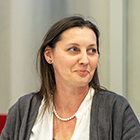
IMAGE: BERROD/WIPO
Silvija Juozelskytė
SilvijART, Ignalina, Lithuania
Silvija is an accomplished textile artist and designer using linen yarn in her art and design, which is an ecological and sustainable material with very deep roots in her country.
Silvija learned to card wool, spin, weave, knit, and dye thread in her village with her grandmother during her childhood. She now has a textile studio called SilvijART, where she weaves and develops projects using a variety of textile mediums and which involves professional textile artists, her regional community, and schools.
Silvija intends to register a trademark to better protect and promote her products.
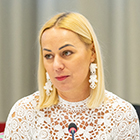
IMAGE: BERROD/WIPO
Lucyna Ligocka-Kohut
Koniaków Lace Foundation, Istebna, Poland
Lucyna is an ethnologist and anthropologist who promotes folk culture from the Silesian Beskids region of Koniaków. She is the founder and president of the Koniaków Lace Foundation, which funds the Koniaków Lace Center and its work.
As a result of her efforts, the tradition of making Koniaków lace was enshrined in the National List of Intangible Cultural Heritage. The Koniaków Lace was also recently registered as a national geographical indication.
By participating in the Program, Lucyna aims to learn how to better leverage and commercialize the Koniaków lace, including through partnerships and online, for the benefit of the local community.
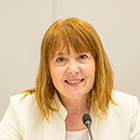
IMAGE: BERROD/WIPO
Slađana Milojević
Nonna Handmade, Belgrade, Serbia
Sladana is an entrepreneur working working with local community women artisans from Western Serbia. She is also a craft practitioner herself, practicing with her sisters various crafts, such as weaving, embroidery, knitting, crochet and teaching the family story of original creations fused with contemporary fashion.
One of the collections created with her sisters, the Nonna Handmade collection, was inspired by their grandmother Milena and grandfather Milinko, and combines traditional and contemporary production methods.
By participating in the Program, Sladana wishes to learn more about trademark registration as well as tips and tricks on how to increase the business’ outreach online.
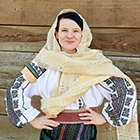
IMAGE: Aida Bondari; Sergiu Bondari
Diana Roșca
Șezătoarea Ciocârlia, Costești, Republic of Moldova
Diana is a graphic designer and embroiderer.
In 2020, she founded the "Șezătoarea Ciocârlia" community in her village, located about 20km from Chișinău, with the primary goal of reviving peasant art. The association has become a nest for people who love authentic traditions.
Their activities include organizing exhibitions, coaching people, and selling traditional shirts. Their biggest challenge is obtaining raw materials since there are no importers in the Republic of Moldova.
Through participating in the Program, Diana wishes to explore the registration of a collective mark to be used by members of her community when selling their products.
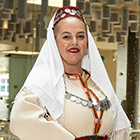
IMAGE: BERROD/WIPO
Ana Šakić
Croatian Cultural Artistic Association Rodoč, Mostar, Bosnia and Herzegovina
Ana is an economist and jewelry designer representing the Croatian Cultural Artistic Association Rodoč. The association aims to preserve, protect and promote the intangible cultural heritage of Croatia in Bosnia and Herzegovina and to sensitize younger generations to their heritage. The association organizes workshops on creating traditional items delivered by women as keepers of these traditions. The workshops create social synergies between generations, with older women passing on their skills and know how to younger generations.
Through her participation in the Program, Ana wishes to create a brand for the association and register a trademark for her jewelry workshop.
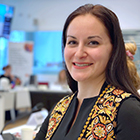
IMAGE: Ana Jurčević
Soňa Stančíková
Detvianske Ludove Umenie (DLU), Detva, Podpol’anie, Slovakia
The Detva and Podpoľanie regions are rich in folk traditions and dances. Soňa is the fourth generation working in the family business Detva's Folk Art.
Soňa's family makes traditional folk clothing using a special embroidery hook. They organize and participate in events that promote this art, such as exhibitions and workshops. Their products are marketed under the brand Regional Product of Podpoľanie, which means that they are handmade with crooked needles and have original ornaments.
Soňa wishes to learn how to better protect the traditional patterns and promote the products, including in foreign markets.
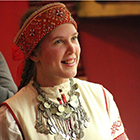
IMAGE: Elena Variksoo
Elena Variksoo
Seto, Russian Federation
Elena belongs to the Seto people and is an activist for the preservation and promotion of her native Seto culture. Elena’s business consists of manufacturing and commercializing products based on the traditional Seto culture, ranging from handmade handicrafts to food products, such as traditional cheeses and other dairy products. All products are made using raw materials/ingredients supplied by the Seto Community of the Pechorsky District.
While the products have initially been sold through an online store and existing souvenir platforms, Elena plans to open an outlet with a mini-cafeteria as soon as the pandemic situation allows. She is currently looking at a trademark registration to better promote and protect her products.
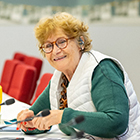
IMAGE: BERROD/WIPO
Flutura Xhabija
SHGPAX/PBWHA, Albania
Flutura is a craft maker with over 30 years of experience in the area of traditional handicrafts, organizing, exhibitions, workshops, business skills trainings and other activities for the benefit of local artisans and entrepreneurs. She is also the founder of the national association for female entrepreneurship "SHGPAZ/PBWHA" dedicated to the provision of capacity building activities and women's business development in Albania. Her objective is to further the economic empowerment of women across the country to, in turn, increase their contribution to the local and national economy.
With her participation in the Program, Flutura wishes to advance the registration of a collective trademark to be used by local artisans on traditional products.
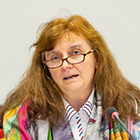
IMAGE: BERROD/WIPO
Ani Yoveva
Samokov, Bulgaria
Ani is an embroiderer with extensive experience in creating, preserving, restoring and reproducing local and regional traditional designs from Samokov and Dupnitsa. She is a lecturer and instructor of needlework and has led workshops at the National History Museum.
Ani has experience working with women from local communities on several National Culture Fund projects. She has participated in several embroidery competitions and exhibitions and has published two books on embroidery and stitch visualization.
During her time in the Program, Ani would like to focus on the protection and commercialization of products under a dedicated trademark.
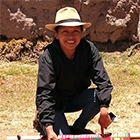
IMAGE: Mauricio Ordoñez Aduviri
Sandra Karina Aduviri Chambi
Aymara, Bolivia
Sandra works with a national organization known as Red OEPAIC (Red de Organizaciones Económicas de Productores Artesanas(os) con Identidad Cultural) - Network of Economic Organizations of Craftspeople with Cultural Identity. Early on, she came to realize that although traditional craftwork heavily contributes to local economic growth and employment, it often lacks intellectual property protection.
Sandra’s objective is to safeguard and revitalize the traditional handicraft techniques and cultural expressions of her community. In order to do so, she plans to register a mark to identify products made by women from her community on national and international markets and to create and opportunity to share the stories and knowledge related to her community’s products.

IMAGE: Sara Fuentes Maldonado
Aurelia Ahua Paa (left) and Romelia Papue Mayancha (right)
Community of Tigüino; members of the Waorani Nation and Amazonian Kichwa People, respectively, Ecuador
Aurelia is a member of the Waorani Nation with training from the OPIAC Leadership School for Indigenous Peoples. Since 2018, she has worked as a community land overseer for the Eco-Science and Amazonia Foundation 2.0. On the other hand, Romelia focuses on technical matters, including purchases and sales as well as outreach via social networks. As breadwinners for their households, Aurelia and Romelia both find craft related work, where they have gained the knowledge required a good alternative to oil- or timber company jobs.
Ömere means “forest” in Wao Terero. The business began with eight craftswomen seeking to pass on their knowledge – of art, creativity, innovation and design – to younger generations. Now collaborating with 60, Ömere aims to help perpetuate the ancestral knowledge and intergenerational values of the Waorani People, despite the rapid cultural changes now occurring.
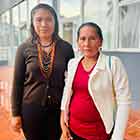
IMAGE: Sara Fuentes Maldonado
Enma Alvarado Huatatoca (left) and Clemencia Alvarado Huatatoca (right)
Nueva Esperanza Community,Amazonian Kichwa People, Ecuador
The community of Nueva Esperanza, which is situated near the Antisana ecological reserve, is an area well suited to farming. Nueva Esperanza’s Kichwa families are dedicated to farming and conservation of the region’s biodiversity. The initiative started when the community saw the need of using natural resources in a responsible and sustainable way. Enma and Clemencia represent the Sumak Yaku Farm Association, whose 54 members began offering for sale a range of essential oils extracted from lemon verbena as well as cinnamon, lemon and orange. More recently, a substance called sangre de drago, extracted from the area’s “dragon’s blood” trees has also been added to the list. All of these products are registered with health authorities and have their own logos. During their time in the program, Enma and Clemencia will be working to further develop the IP strategy for their community’s products.
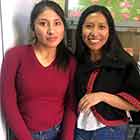
IMAGE: Dayana Blanco
Jimena Aranibar Blanco (left) and Dayana Blanco Quiroga (right)
Turco Marka, Carangas Nation, Bolivia
Jimena and Dayana are members of the Carangas Nation living in the Turko Marka indigenous community in Oruro, Bolivia. Turko Marka is a major producer of camelid livestock, llama meat and other derivatives, consisting mainly of jerky. When community leaders took the decision to commercially produce and sell llama jerky, they created and registered the company EcoTurco, which resulted in job creation within the community and the production of nourishing and healthy food for consumers. Therefore, their aim is to tackle unemployment and malnutrition. The community now plans to register a collective trademark, enabling it to export its jerky production to international markets.
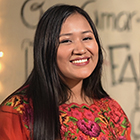
IMAGE: Chejo Ponce
Angela Chiquin Chitay
Q'eqchi' Indigenous community | KEMOK, Guatemala
Angela is a passionate advocate for the socio-economic empowerment of Indigenous women and girls. She belongs to the Q'eqchi' Indigenous community known for its tight-knit bonds and deep cultural roots. Within this community flourishes a rich tradition of craftsmanship, especially the intricate art of backstrap loom weaving, a skill passed down through generations.
Driven by the exceptional talents of the women of her community, Angela founded KEMOK, a community project that revitalizes and empowers Indigenous women and girls through backstrap loom weaving. Their recent organization of the First Artisan Weaving Festival, provided a platform for women to showcase their remarkable huipil creations, boosting self-identity and economic prospects.
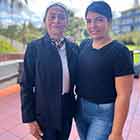
IMAGE: Sara Fuentes Maldonado
María Auxiliadora Corral Hidalgo (left) and Dexcy Zambrano Fernández (right)
Los Naranjos Community, Montubio People, Ecuador
Los Naranjos is a community of the Montubio People of Ecuador that farms and produces wild fruit. Maria Auxiliadora and Dexcy provide training in the transformation of raw materials into finished products with added value, that are offered for sale but also consumed within the community to improve nutrition. Dexcy is a student in agribusiness looking into ways to fully exploit the potential of seeds. She has collected 15 varieties, three of which have already been officially classified.Together, María Auxiliadora and Dexcy are working to revive and apply their people’s heritage of traditional farming and nutritional knowledge for the benefit of their community.
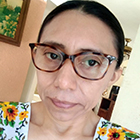
IMAGE: Juana Griselda Couch Cab
Juana Griselda Couch Cab
Yucatec Maya, Mexico
Juana is dedicated to farming, beekeeping and livestock. She works with a Mayan group of women known as Kuchil Kaab, which produces health care products from Melipona honey, that comes from the native Xunaan Kaab bee.
Juana’s project has a dual objective: to train the women’s group and help them market and sell their products, and to promote the health benefits of honey within wider urban communities. In order to achieve these objectives, Juana will support the women’s group with the registration of a collective or certification mark for the honey-based products.
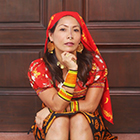
IMAGE: Gilberto Alemancia
Soguiguili Díaz
Ustupu | Indigenous Tourism Network of Panama (REDTURI PANAMA), Panama
Soguiguili was born in the Ustupu community in the Guna Yala region. She is the co-founder and president of the Indigenous Tourism Network of Panama (REDTURI PANAMA). In that capacity, her focus lies in shaping Indigenous tourism initiatives that uplift local communities, fostering a supportive and sustainable economy. Soguiguili seizes opportunities to serve as a cultural and Indigenous tourism ambassador through various initiatives.
Soguiguili is an artisan herself, skilled in the textile art of the molas. Leading the traditional Guna USKALU dance, Soguiguili safeguards the liveliness of her people's customs and traditions. Her community holds a strong conviction in the enduring strength of their living culture against identity challenges.

IMAGE: Jay Black Production
Anastasha Elliott
Sugar Town Organics, Saint Kitts and Nevis
Anastasha comes from Basseterre in Saint Kitts and Nevis Islands. She is behind the social enterprise Sugar Town Organics that creates eco-friendly Caribbean health and wellness goods by using smart farming practices.
Sugar Town Organics grew from Anastasha's family experiences, going back four generations. The product production started through the growing need for healthy options despite limited resources available and existing social issues. Anastasha and her mom teamed up to make these items using recipes passed down by women in their family.
Sugar Town Organics puts an emphasis on giving back to the community. Their "Each One Teach One" project focuses on education and skills, especially for youth within her community.
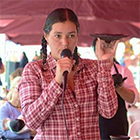
IMAGE: Vero Cordoba
Celeste Mariana Escobar
Collective of Indigenous Women Potters from Caaguazu, Paraguay
Celeste is a member of the Collective of Indigenous Women Potters from Caaguazu Itá, a community initiative founded in 2002 and known as “Kambuchi Apo”. The collective has achieved direct sales to consumers using fair trade practices. It is also active in the digital economy, using social media tools, which enable the potters to reach a wider consumer base.
Celeste aims to safeguard and revalue her Collective’s ancestral ceramic techniques and to find ways to develop a sustainable provision of raw materials needed to produce the ceramic works. By joining this program, Celeste hopes to acquire the knowledge needed to market her products internationally and to protect them.
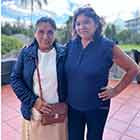
IMAGE: Sara Fuentes Maldonado
Clorinda Flores Chero (left) and Juana Ruiz Nima (right)
La Encantada, Peru
Clorinda and Juana live in a village of artisans largely dedicated to ceramic craftwork. Recognized for its quality and originality, their work also revives ancestral techniques of the Vicús and Tallán cultures. As members of an outward-facing association of craftswomen, “La Encantada”, both women work to promote the community’s handicrafts, culture and tourism as a means to support their families. They are committed to economic opportunity and empowerment for craftswomen, delivering trainings to improve the quality of craftwork and looking for sales and promotion opportunities for their products at craft fairs. Their goals are to increase sales volume, expand the scope of their business locally and regionally and ultimately start exporting to foreign markets.
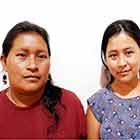
IMAGE: Sichan Santi
Verónica Guatatuca Santi (left) and Mireya Santi Santi (right)
Kisuar Amazanga Community, Amazonian Kichwa and Shuar People, Ecuador
Verónica and Mireya are members of the Kisuar Amazanga community. They both work on the farm growing trees and native plants that produce seeds used in their jewelry and mocawas (traditional bowls).
Income from the sale of those products helps to pay for school tuition and is also saved to later invest in workshops. Eight women participate in these activities and sell products in the community and at fairs. This group now plans to establish a formal association, register a collective mark, find more customers, increase jewelry production and involve more women from the community.
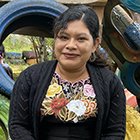
IMAGE: Tania Vázquez
Maria Yolanda Hernández Gómez
Tsotsil Maya, Mexico
Yolanda is a member of Mujeres Sembrando la Vida, a group of 70 Tsotsil women artisans who decided to band together to sell their handmade textiles, created with a waist loom and embroidered by hand. The textiles are sold via an online store, which has helped to improve the living standards of the members.
As part of the program, Yolanda wants to learn how to protect the designs of the group’s artisanal products and register a collective or certification mark to distinguish their products in the marketplace.
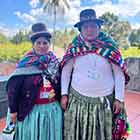
IMAGE: Sara Fuentes Maldonado
Angelica Huanca Iquisi (left) and Felipa Marca Choque (right)
Ayllu Agua Blanca, Pukina Nation, Bolivia
Angelica and Felipa are members of Bolivia’s Pukina Nation living in the community of Ayllu Agua Blanca. Both are members of the Ayllus and Markas of the Qullasuyu National Council (CONAMAQ) and active participants in its committees on community development.
Their community’s business consists of 15 women engaged in crafting traditional woolen products and managing alpaca livestock, as the source of wool used. Consisting largely of knitting and weaving, the work has been rewarding for the women involved, who use needles as well as looms to produce scarves, sweaters, dresses, gloves, caps, collars and other articles. This initiative started when Angelica and Felipa saw that the work at the mines was too risky for women in their community. Therefore, they created this initiative, which allows women to have an additional source of income.
Angelica and Felipa are particularly interested in learning how best to market their products. The main challenge has been limited sales for lack of a direct market.
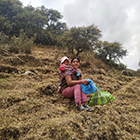
IMAGE: Aurea Eulalia Mendoza Capcha
Aurea Eulalia Mendoza Capcha
Community of La Quinua, Peru
Aurea is a potato farmer from the rural community of La Quinua. She belongs to a family of dedicated farmers and has been growing potatoes in the field since she was a little girl. For Aurea, there is an important cultural value of the potato in the community, linked to the traditional knowledge, methods and tools of preserving the varieties unique to the region and the country. Besides being a mother and a farmer, Aurea is an active member of the Association of Guardians of the Native Potato from Central Peru (Asociación de Guardianes de la Papa Nativa del Centro del Perú – Aguapan).
As a part of the program, Aurea has received guidance on the creation of a collective mark to distinguish and commercialize the native potatoes produced by the members of the Aguapan association.
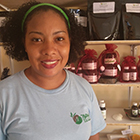
IMAGE: Kyle Zuniga
Lorcia Moore
Creole, Belize
Lorcia is the successful owner and creator of Naturally Belize Coconut Oil Products, an eco-friendly company that uses the bi-products of coconut to produce hair and skin care products. Naturally Belize’s products are made with 100% pure virgin coconut oil, retaining the coconut’s nutrients and natural flavor. Lorcia is also the founder of the Women Coconut Processors Association, which trains women in production of coconut-based products.
During her time in the program, Lorcia received guidance on how to protect her business’ intellectual assets and promote her goods nationally and internationally. Lorcia now markets her products through a physical store in Punta Gorda, Belize, and an online store.
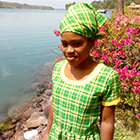
IMAGE: Alex Moore-Minott
Chevauné Moore-Minott
Arawak/Maroon of Jamaica, Jamaica
Chevauné is a member of the West Indian Tribal Society, which works towards cultural preservation through promotion, advocacy and education activities. She is also the co-founder of Katawud Natural Products, a tribal business based in Cattawood Springs that creates tradition-based natural products including soaps, herbal teas and medicines to promote the sustainability and economic viability of her culture.
Under the program, Chevauné will focus on the branding and marketing strategy for Katawud Natural Products. She hopes that her initiative will contribute to making indigenous culture fashionable and useful, thus encouraging youth to preserve and practice it in a time when it is often more attractive to abandon indigenous lifestyles.
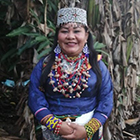
IMAGE: Dañana Karolay Urqui Mori
Diana Mori Gonzales
Shipibo-Konibo, Peru
Diana is a member of the Shipibo-Konibo community. She is building an indigenous business called Kene Biri aimed at strengthening the capacity of women entrepreneurs from her community who deal in handicrafts and other art ventures and help them to protect and promote their traditional arts and crafts.
During her time in the program, Diana will look for business opportunities for her community and receive guidance on how to protect her community’s intellectual assets, including the registration of a collective or certification mark.
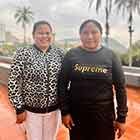
IMAGE: Sara Fuentes Maldonado
Ruby Ponare Rodriguez (left) and Milena Rincón Lara (right)
Trompillo Kuwai, Sikuani People, Colombia
The ancestral land where Ruby and Milena live is shared by various indigenous peoples: the Sikuani, Cuiva, Piapoco and Waipijiwi. Milena is the leader and representative of the recently established Lekonaewa Association of Craftswomen. Ruby is an active craftworker within the community. They and fellow workers create traditional woolen products and prepare manioc and casabe (yucca bread). Their collective aim is to revive and develop traditional crafts, keep the memory of their ancestors alive and live a good life consistent with the beliefs of their people.
Their dream is to have their own workshop where they can sell their and improve their products for export. Additionally, they want to have this space to teach children about their traditional techniques of making their crafts.
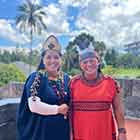
IMAGE: Sara Fuentes Maldonado
Judith Blanca Reymundo Ruiz (left) and Marisol Shariva Pérez (right)
Platanillo de Getarine, Florida, Ashaninka/Yanesha and Ashaninka, Peru
Peru’s Puerto Bermúdez District is home to 147 Asháninka indigenous communities. The Asháninkas Iroperanto Koya Association of Women Entrepreneurs, of which Judith and Marisol are members, has brought together 50 women from 15 of those communities with the aim of reviving their ancestral culture, language, practices and knowledge, now in danger of extinction. The Association also strives to support the economic empowerment of Asháninkas women and to promote and distribute its members’ products through the Association’s participation in eco-fairs in Lima. Judith and Marisol’s participation in the program will provide the opportunity to develop and implement and IP strategy for the community’s’ products.
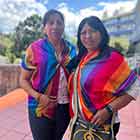
IMAGE: Sara Fuentes Maldonado
María Rosero Trejo (left) and Nury Ruano Chapues (right)
Ipiales indigenous reservation, People of Los Pastos, Colombia
María and Nury live on an indigenous reservation in the town of Ipiales in southern Colombia. They are the coordinators of a community weavers’ network comprising 30 women and three men. Working with their traditional Guanga fabric, the weavers produce ruanas (a kind of poncho), scarves and handbags. All products are handmade from sheep’s wool, using traditional manual techniques for shearing, carding, winding, stretching, washing and dying to prepare the raw material that is then woven into various fabrics. The business engages women, youth and children in the revival of ancestral knowledge, customs and traditions. The goods are then offered for sale, thus helping to disseminate Pasto culture and supporting the community’s livelihoods.
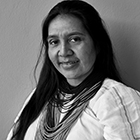
IMAGE: Artesanías de Colombia
Judith Marina Torres Solís
Arhuaco, Colombia
Judith is a member of the Arhuaco community and the Asoarhuaco Association of local producers. She is also the founder of the Kunsamu (origin of women) weaving line in the communities of Kankawarwa, Munimake and Windiwa. The aim of the Kunsamu line is to strengthen the artisans’ cultural knowledge, refine ancestral weaving techniques and improve the women’s economic income.
As part of the program, Judith will focus on the development of strategies to safeguard and protect the traditions, design and symbols of the mochilas Arhuacas (backpack) by registering “Kunsamu” as a trademark. She will also focus on the marketing strategy for her community’s products.
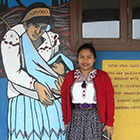
image: Luis Balbuena
Nancy Clara Vásquez Garcia
Ayuujk Mexico
Nancy is one of the founders of the Ääts hilando caminos collective, a group of women embroidery committed to the preservation, safeguarding and promotion of the traditional handicrafts and ancestral knowledge of the Santa Maria Tlahuitoltepec Mixe community. The women of this group design and produce traditional clothing including the Xaamnixuy and Tlahuitoltepec blouses, which they offer for sale in physical outlets but also online.
During her time in the program Nancy received guidance on how to protect and promote her community’s cultural expressions, including in the digital economy.
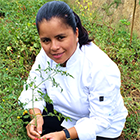
Image: Lorena Salazar Villarreal
Fanny Vergara Ibarra
Vargas Torres, Ecuador
Fanny is a member of the 200-year old Vargas Torres Community in the Tosagua Canton. Her project is to establish the Manabi culinary school with a focus on a ‘farm to table’ approach. The school will instill in future chefs the value of the work that goes into the production of quality food.
As part of the program, Fanny is developing a better understanding of intellectual property rights and how they can be used to protect and promote her community’s many creations and innovations.
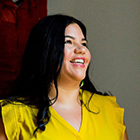
IMAGE: Jill Fannon
Ashley Minner
Lumbee Tribe of North Carolina, United States of America
A member of the Lumbee Tribe of North Carolina, Ashley is a folklorist and has studied and documented aspects of her community’s cultural identity. Through ethnography, archival research and with the help of her elders and creative team, Ashley has been mapping East Baltimore’s historic area known as “The Reservation”.
As a participant in the program, Ashley has developed several projects that will document the aforementioned historic “Reservation”. These include a print map and guide, a cellphone walking tour application an Arc GIS story map and a dedicated website. Ashley intends to promote the use of these resources and spread knowledge of the Lumbee’s cultural heritage.
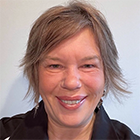
IMAGE: Shannon Monk
Shannon Monk
Mi’kmaq and Oji-Cree, Canada
Shannon is Mi'kmaq from Lennox Island in Prince Edward Island, and Oji-Cree as a member of St. Theresa Point First Nation in Manitoba. She has worked her whole life with First Nations, primarily as an educator. Shannon is supporting Mi’kmaq elders, knowledge keepers, artists, crafters, performers and business owners to protect their cultural knowledge.
As part of the program, Shannon is exploring collective intellectual property strategies that will aim to build an authentic certification process for cultural tourism business owners, entrepreneurs, crafters, artists and performers. She believes that this initiative will be an important step towards creating a strong tourism sector by upholding the authenticity of Mi’kmaq cultural products and tourism experiences.

IMAGE: Malia Nobrega-Olivera
Malia Nobrega-Olivera
Kaua’I, Hawaii, United States of America
Malia, a Native Hawaiian, was born and raised on the island of Kauaʻi. Malia is an educator, a kumu hula, a salt maker, an event strategist, and an advocate of Indigenous rights locally, regionally, and internationally. Malia is also a multimedia artist with experience in lei making, film making, multimedia presentation. In the past few years, she has undertaken the journey of ʻulana lauhala (pandanus weaving).
Malia is involved in a community-based project relating to fiber arts, developing educational resources, and creating wearable art pieces. Together with her fiber art mentor, Malia is working on cultural exchanges with other Indigenous fiber artists and mentoring the next generation.
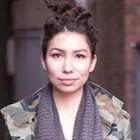
IMAGE: Justin Aranha
Sage Paul
Indigenous Fashion Arts (IFA), Canada
Sage is an urban Denesuline woman. Born and raised in Toronto, her family comes from Patuanak and she is a member of the English River First Nation. She also has ancestral roots in Europe. Sage Paul is an artist and designer whose work centers around family, sovereignty, and resistance for balance.
Sage co-founded the arts and cultural festival Indigenous Fashion Arts (IFA), where she is now the Executive & Artistic Director. This non-profit arts organization is by and for Indigenous artists and designers delivering artist-focused initiatives, public programming, and sector innovation. IFA's largest initiative is the biennial Indigenous Fashion Arts Festival (Toronto), which presents over 100 international Indigenous designers.

IMAGE: Sylvia Plain
Sylvia Plain
Aamjiwnaang First Nation, Canada
Sylvia is Anishinaabe from Aamjiwnaang First Nation made up of Ojibwe, Odawa and Potawatomi Nations, also known as the Three Fires Confederacy, one of the oldest political confederacies within the Great Lakes Basin. The people of the Great Lakes are known for their water vessel, the wiigwaas ciimaan, a canoe made from the bark of the birch tree.
Sylvia is a practitioner and educator of traditional knowledge, particularly around canoe-building, basket-making and weaving. In 2014, Sylvia launched the Great Lakes Canoe Journey Education Program to teach Indigenous community members how to build birch bark canoes, the technology that comes with it and the history of Indigenous innovations and contributions within the Great Lakes Basin.
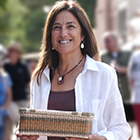
IMAGE: Steve Wewerka, courtesy of First Peoples Fund
Theresa Secord
Penobscot, United States of America
Theresa is a traditional Penobscot basket maker. She weaves traditional Wabanaki baskets using her great-grandmother’s wooden forms and tools, a skill she learned from an elder in her community. She has taught many to weave ash and sweet grass baskets, including her own son, to ensure continuation within her family.
As part of the program, Theresa has been documenting the traditional weaves of the Penobscot and Passamaquoddy tribes in Maine – a first-time endeavor by an indigenous person. She also registered the trademark WIKEPI BASKETS to protect and promote her baskets and developed her online presence by setting up her website.
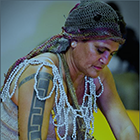
Image: JAT Photography
Florence Jaukae
Goroka, Papua New Guinea
Florence is an internationally recognized fiber artist and sits at the forefront of wearable Bilum. She is also the founder of the Goroka Bilum Festival, a platform that aims at preserving and celebrating the cultural practice of weaving bilum and which now provides women weavers in Papua New Guinea an opportunity to earn an income.
As a participant of the program, Florence has received guidance on how to manage intellectual property issues that arise in the context of the Goroka Bilum Festival. She has also started the process of registering her own trademark to ensure that her work is easily identified and attributed to her and her culture.
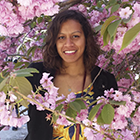
Image: Subama Mapou
Subama Mapou
Kanak Unia tribe, New Caledonia (France)
Subama is a young Kanak from the Unia tribe. She holds a bachelor in biology and a master in plant and micro-organism biology. She is the founder of GARDENIA COSMETIQUE, a startup that aims to promote biodiversity and traditional knowledge using an ecological and innovative eco-extraction process.
As a participant of the program, Subama co-founded the Kanak Institute of Plants, Handicrafts and Indigenous Languages (IKAPALA), an NGO which aims to bring together a network of actors committed to the enhancement and protection of Kanak traditional knowledge. Subama also intends to develop a database of natural resources in vernacular languages.
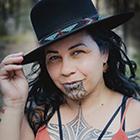
Image: Billie Jean Gabriel Photography
Tia Taurere-Clearsky
Nga Puhi/Ngati Kuri (Maori), New Zealand
Tia is an editor and videographer for broadcast television who noticed that existing online repositories did not provide truly accurate depictions of indigenous people and the way they live. To provide indigenous representation and content to service the film and television industry, Tia decided to create a website to provide indigenous footage and images.
Under the program, Tia has approached indigenous artists in New Zealand, Australia, Canada and the United States of America in furtherance of her project. She aims to protect and promote her work and the work of the artists that will be featured on her website through copyright and trademarks.
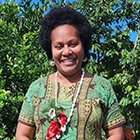
图: Debra Waqalevu
Emily Waqalevu
Na I Soqosoqo Vakamarama I Taukei Cakaudrove (SVTC), Fiji
Emily lives in Soqulu village, Fiji Islands. She is a dedicated member of the Na I Soqosoqo Vakamarama I Taukei Cakaudrove (SVTC), a registered NGO focusing on empowering rural Indigenous women and promoting I-taukei traditional knowledge through cultural practices.
Emily is renowned for her groundbreaking achievement as the first person in Fiji to recreate the iconic "tagimoucia flower", using mulberry bark called "tapa" and acrylic paint. This beautiful red and white orchid, native to Fiji, inspired a thriving enterprise after garnering widespread interest. Emily's creations expanded to include diverse products like earrings, necklaces, hairpieces, garlands, and more.